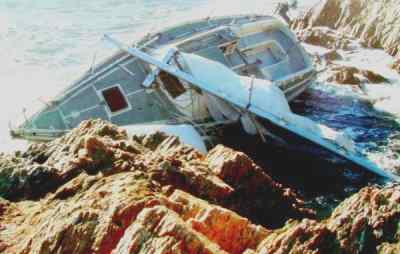|
ANCHOR HISTORY and DEVELOPMENT |
||||||||
|
SITE INDEX CATAMARAN HULL SOLAR PANELS ELECTRIC MOTORS BATTERIES CREW EXPEDITION MUSIC GOODIES |
||||||||
|
ANCHORING: A vessel's anchor is widely regarded as the most important piece of safety equipment on board and with good reason. The method of attaching an anchor to a vessel is almost as important as the anchor itself. No other device has the ability to save both vessel and crew more frequently, yet more often than not boat builders fit inadequate anchors. Like everything else, anchoring technology has moved on considerably over the last twenty years, yet many yachtsmen still rely on dated anchors. Whilst anchors like the CQR, Danforth and Bruce have certainly played a key role in anchor development, more efficient and versatile anchors are now on the market. The idea of carrying a variety of anchors for different conditions is becoming less valid.
HISTORY OF CHAIN DEVELOPMENT The
history of the anchor chain is old. It was the thing when an Alexander
big king attacked Chil City in 332 B.C. Because an enemy came to a
limit, he used an iron chain as the anchor rope of the ship of the
supporter. English blacksmith acquired a patent in 1643. (Phillip White) The English navy thought that it was intended to be adopted. But, it wasn't actually used. The ship said as Ann Isabela in the sea with the tremendous drift ice in 1808 used an anchor chain, and then it was anchored. It became reputed that the anchor chain of this ship wasn't cut off though rope of some Tomari ships was cut and those ships took rope in this ship. Incidentally, this anchor chain was created by Robert Flinn. Shackle was developed in the same year, and then Swivel was developed in 1811, too, and then Stud was devised in 1813. The use of the anchor chain proceeded rapidly by these ideas and the development because the inconvenience of chain disappeared and strength became stable and then the connection of the chain became easy. Anchor chain of the warship The Kaiyomaru of Edo shogunate period established in the Netherlands AD 1865. Lloyds Register Chronology of Anchor Chain 1808:
Wrought iron cables were first recorded as having been made by Robert Flinn,
a blacksmith, and used for the ship ANN & ISABELLA.
History And Development Of The Marine Anchor History And Development Of Anchor Chain Lloyds Register Chronology of Anchor Chain 1902 Scientific American Article
|
||||||||
|

